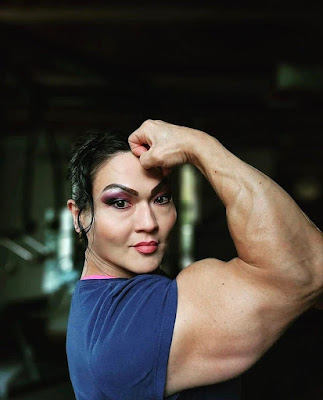An In-Depth Look at Shoulder Anatomy: The Complex Structure Beneath the Surface
"An Inside and out Check out at Shoulder Life systems: The Complicated Design Underneath the Surface"
Presentation
The shoulders, frequently viewed as quite possibly of the most adaptable and versatile joint in the human body, are a momentous mix of many-sided life systems and biomechanics. Understanding the life structures of the shoulders is fundamental for those keen on actual wellness as well as for anybody hoping to see the value in the unpredictable plan of the human body. In this selective article, we will set out on an excursion underneath the surface to investigate the perplexing design of shoulder life structures, enveloping bones, joints, muscles, and their transaction.
The Fundamental Shoulder Life systems
The shoulder is much of the time portrayed as a ball-and-attachment joint. It is a surprisingly portable joint, taking into consideration an extensive variety of movement. The essential parts of the shoulder life structures include:

Humerus: The upper arm bone, the humerus, associates with the shoulder joint. Its round head squeezes into the shallow attachment of the scapula to make the glenohumeral joint, the fundamental shoulder joint answerable for the vast majority of the shoulders' versatility.
Scapula: The scapula, ordinarily alluded to as the shoulder bone, is a level, three-sided bone situated at the rear of the shoulder. It includes the glenoid pit, the shallow attachment where the humeral head explains, shaping the glenohumeral joint.
Clavicle: The clavicle, usually known as the collarbone, interfaces the shoulder complex to the pivotal skeleton. It assumes a huge part in balancing out the shoulder joint.
Shoulder Joints
The shoulder complex comprises of various joints that cooperate to work with development and dependability. The fundamental joints are:
Glenohumeral Joint: As referenced prior, the glenohumeral joint is the essential ball-and-attachment joint in the shoulder. It takes into account broad versatility however is less steady because of its shallow attachment. This joint is answerable for arm flexion, expansion, snatching, adduction, inward revolution, and outer pivot.
Acromioclavicular Joint (AC Joint): This joint interfaces the clavicle and the acromion cycle of the scapula. It gives security to the shoulder and is many times associated with shoulder wounds.
Sternoclavicular Joint (SC Joint): The SC joint interfaces the clavicle to the sternum (breastbone) and gives extra dependability to the shoulder complex.
Muscles of the Shoulder
The muscles of the shoulder, or the rotator sleeve muscles, are imperative for both versatility and dependability. They comprise of four muscles:
Supraspinatus: This muscle is answerable for starting kidnapping of the arm, raising it aside.
Infraspinatus: The infraspinatus supports outside revolution of the shoulder joint.
Teres Minor: This muscle works related to the infraspinatus to work with outside revolution.
Subscapularis: The subscapularis is the just rotator sleeve muscle that performs inward turn of the shoulder joint.
Notwithstanding the rotator sleeve muscles, a few different muscles add to bear capability, including the deltoid, pectoralis major, and trapezius muscles.
The Job of Tendons
Tendons are solid, sinewy groups of connective tissue that give steadiness to the shoulder joints. Significant shoulder tendons include:
Coracoclavicular Tendon: This tendon associates the clavicle to the coracoid cycle of the scapula and assumes a significant part in balancing out the air conditioner joint.
Coracoacromial Tendon: This tendon likewise starts from the coracoid cycle yet interfaces with the acromion, framing a defensive curve over the shoulder joint.
Glenohumeral Tendons: These tendons give steadiness to the glenohumeral joint, forestalling separation and controlling the scope of movement.
Conclusion
The shoulder is a genuine wonder of physical designing, with its complicated construction considering the unimaginable scope of movement that is key to our regular routines. Figuring out the complexities of shoulder life structures, from the bones and joints to the muscles and tendons, assists us with valuing the amazing abilities of this joint. It additionally gives significant information to medical care experts, competitors, and people hoping to keep up with shoulder wellbeing and capability. The shoulders are not only an actual association; they are an ensemble of interconnected parts cooperating to accomplish both portability and steadiness, highlighting their crucial job in our ordinary exercises.





Comments
Post a Comment